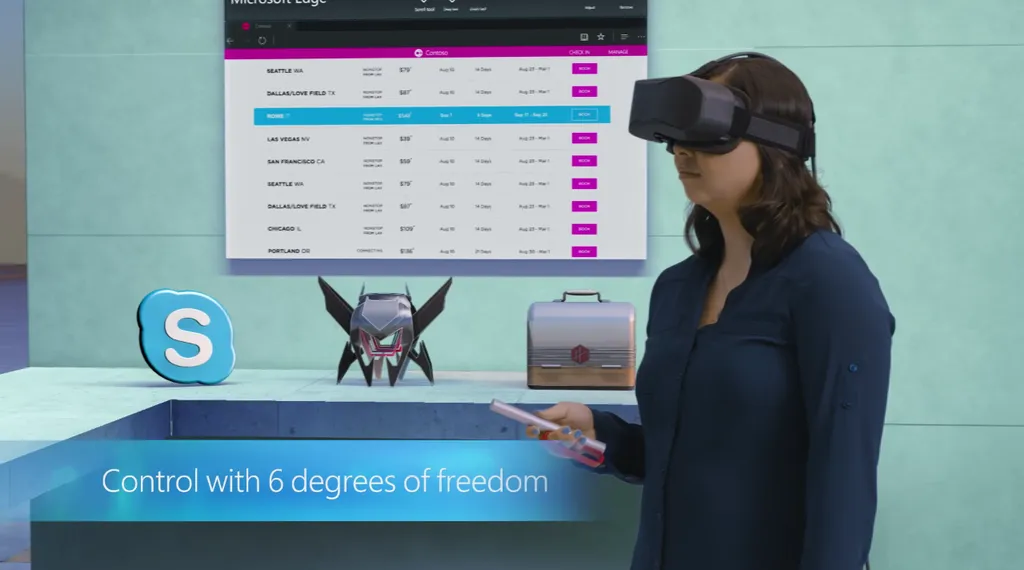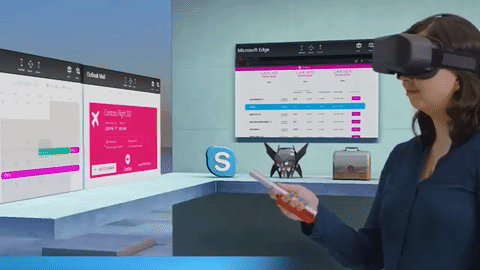There are still a lot of questions to be answered about Microsoft’s new VR headsets for Windows 10 before they start rolling out next year. That said, a new video from the company has reminded us that one of the biggest mysteries may have already been solved.
Below is a trailer of Microsoft’s upcoming Creator’s Update for Windows 10, also due to arrive early next year. It showcases plenty of the new features detailed in last week’s conference, but pay particular attention to the first 12 seconds.
https://youtu.be/zdJBurRbT4o
There’s a blink-and-you’ll miss it glimpse of a clip that was first shown a few months back at the Intel Developers Forum. There, Microsoft released a concept video for its Windows Holographic system that was almost identical to the demo we saw on-stage last week. A VR user visits a personal space where they can access different Windows 10 apps, and then immerses herself in a 360 degree capture of the Roman Pantheon. Microsoft was effectively telegraphing exactly what it was going to announce all the way back in August.
https://youtu.be/Gu09UWqS8-Q
The most important element here is the 6 degree of freedom (6DOF) controller being used. Last week’s on-stage demo didn’t feature any such controller, and it could be the one in the video above is simply a placeholder prop (the headset itself doesn’t look like the other two we’ve seen so far). Given the similarities between the two demos, it could be that Microsoft’s partners, which include HP, Dell, Lenovo, Asus and Acer, may be making such controllers too.
We’ve reached out to Microsoft to clarify if partners could be making these controllers.
If this is the case, Microsoft’s approach to Windows 10 VR headsets will actually be pretty close to Google’s efforts with its Daydream mobile VR ecosystem. The search engine giant is also getting manufacturers like Samsung and Huawei to make Daydream-ready headsets and motion controllers: the only real difference is that Google is also making one itself whereas it doesn’t look like Microsoft will.
Following last week’s reveal, we spoke with Raven Zachary of HoloLens enterprise studio, Object Theory. He told us that the studio had experimented with its own form of precision input and was confident it could even make its own solution for clients if needed.
We’re expecting to hear more about Windows 10 VR early next month.





























